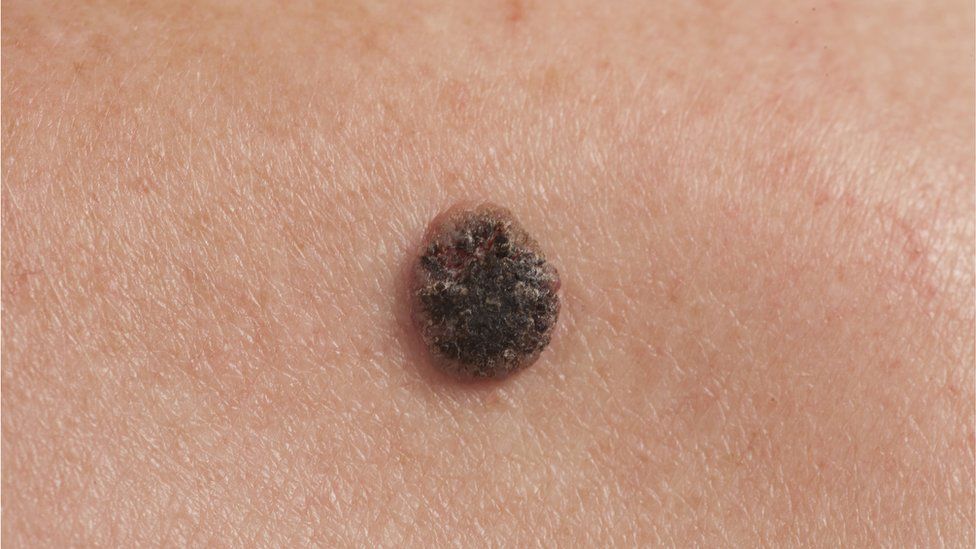What is malignant melanoma and how do you treat it?
- Published

Alliance Party leader Naomi Long has revealed she has received treatment for malignant melanoma. Nothing in politics was as frightening as feeling as though her own body was "working against" her, she told BBC NI's Spotlight programme. But how do you spot the cancer, and how do you treat it?
What is malignant melanoma?
Malignant melanoma skin cancer is an aggressive, potentially fatal type of cancer that can rapidly spread to other parts of the body.
It often starts with a change in a mole or a new growth on normal skin.
Certain skin types are more at risk than others.
- The main cause is sun exposure due to ultra violet radiation (UV) from exposure to the sun, sunbeds, or a history of sunburn, especially in childhood.
- Signs and symptoms include a new growth or sore on the skin that does not heal in 3-4 weeks, a sore that continues to itch, scab or bleed or unexplained continued ulceration.
- Fair, easily burned skin has a higher risk of developing a melanoma.
How common is it?
The number of people affected by malignant melanoma in Northern Ireland continues to increase each year.
Since the 1990s the incidence of melanoma has doubled.
Skin cancer is the most common form of cancer in Northern Ireland, accounting for a third of all cancers.
However, malignant melanoma accounts for less than 3% of all cases.
- On average, 3,780 people in Northern Ireland develop skin cancer each year
- Some 332 cases of malignant melanoma are diagnosed each year
- Malignant melanoma kills about 47 people in Northern Ireland each year
Figures from the NI Cancer Registry from 2010 to 2014
Why is malignant melanoma on the rise?
Malignant melanoma is on the increase among both men and women.
It has increased by 3.9% each year for men and by 2.4% each year for women.
Men
In 1993: 56 cases diagnosed
In 2014: 155 cases diagnosed
Women
In 1993: 119 cases diagnosed
In 2014: 197 cases diagnosed
Over-exposure to ultra-violet radiation from the sun and from sunbeds is the main cause of most skin cancers, says Gerry McElwee, Head of Cancer Prevention at Cancer Focus Northern Ireland.
"Sunbeds are now much more readily available, we're travelling abroad to the sun more often than we use to, and attitudes to tanning have changed - some people equate a tan to looking good," he told BBC NI.
How do you spot malignant melanoma?
It is important to check your skin regularly for suspected skin cancers, experts advise.
Check the whole body, as skin cancer can occur in places not normally exposed to the sun.
If you identify an unusual spot, show this to a doctor.
How do you treat it?
Most skin cancers can be treated successfully if spotted early.
Melanomas are usually treated surgically.
If the melanoma has spread beyond the skin, immunotherapy, chemotherapy or radiotherapy may be used.
How do you avoid melanoma?
Seek shade when the sun is at its strongest - generally from 11:00 to 15:00.
Cover up in the sun with a long-sleeved T-shirt, sunglasses and a hat.
Use sunscreen with a minimum SPF of 15 for UVB protection and 4-star for UVA protection. Apply liberally 30 minutes before going out in the sun and re-apply at least every two hours.
Be sure to cover areas which are sometimes missed, such as the lips, ears, around the eyes, neck, scalp and the backs of your hands.on't use sunbeds.
- Published22 November 2016
- Published4 May 2015